Before I begin, I want to thank, from the bottom of my heart, all of our healthcare personnel and other essential workers around the globe who have been working tirelessly to help keep us healthy, safe and sane! THANK YOU! THANK YOU! THANK YOU!
This is certainly an unprecedented time, to say the least. If you work with children in any capacity, you are definitely facing certain challenges. Parents are trying to fulfill many different roles while at home. Teachers are moving to virtual platforms, whether synchronous or asynchronous, which means learning may look a little different in your home.
In conversations with friends and family, some common concerns keep arising: With less “school time” for our children, how can we be sure that our children are gaining an essential education? How can we foster more educational activities at home? Are my children learning everything they need to learn? With all the societal issues we are facing right now, parents are unfortunately confronted with these additional stresses.
This post is designed for parents (of young children) who are not familiar with teaching math, in order to help ease some of those concerns. As a high school math teacher, but also as the parent of a very young child, I am learning more and more the connections between what I can reinforce at home now, and how it connects to what my son will need to know, believe it or not, when he’s in high school. Building and reinforcing mathematical foundations early in life helps to develop critical thinkers and better problem solvers. This is one of the most important goals of our mathematics classrooms.
This global pandemic will (hopefully) be a small blip in time, and we will return to normal, or a “new normal” I suppose, as soon as we are able. In the meantime, there are simple and fun ways to engage your children with mathematics while staying at home. Some of those opportunities that I’ve noticed while staying at home with my own son are listed below. This “Top 10 List” will hopefully help you brainstorm how you can foster “M.A.T.H. – Math At The Home!”
You are probably already naturally doing some of these activities, but sometimes small changes in how you question your “students” (a.k.a. your children!), can make a big difference in igniting key mathematical concepts. Teachers spend their whole careers honing their craft, and a large component of that craft is questioning. Questioning is a strong pedagogical concept that teachers continue to refine year after year. How you initiate with a question, and then how you build your questioning as you respond to various answers can have a profound way in how kids learn and synthesize information. Keep your questioning in mind when you work with your children!
- Count. Count all day long. For example, count items in your house, but furthermore, count how many blue books are on your shelf, then count how many red books are on your shelf, count the number of seconds you are washing your hands (hopefully 20!). Ok, that was an easy one. Furthermore, please don’t be afraid to introduce the concept of 0 to a young child! If you have 0 of something, you have none. You can also count by numbers other than 1. I see no reason why a young child can’t at least learn how to count by 2’s. But, you should physically show this with…anything in your home! Marbles, blocks, paper clips, whatever you have! When you’ve mastered 2’s, I would say up until 20, try 5’s, and then try 10’s. The National Museum of Mathematics (MoMATH) once recommended a cute book titled: “Sheep Won’t Sleep: Counting by 2s, 5s, and 10s” that my son loves. It is a nice introduction to this concept.
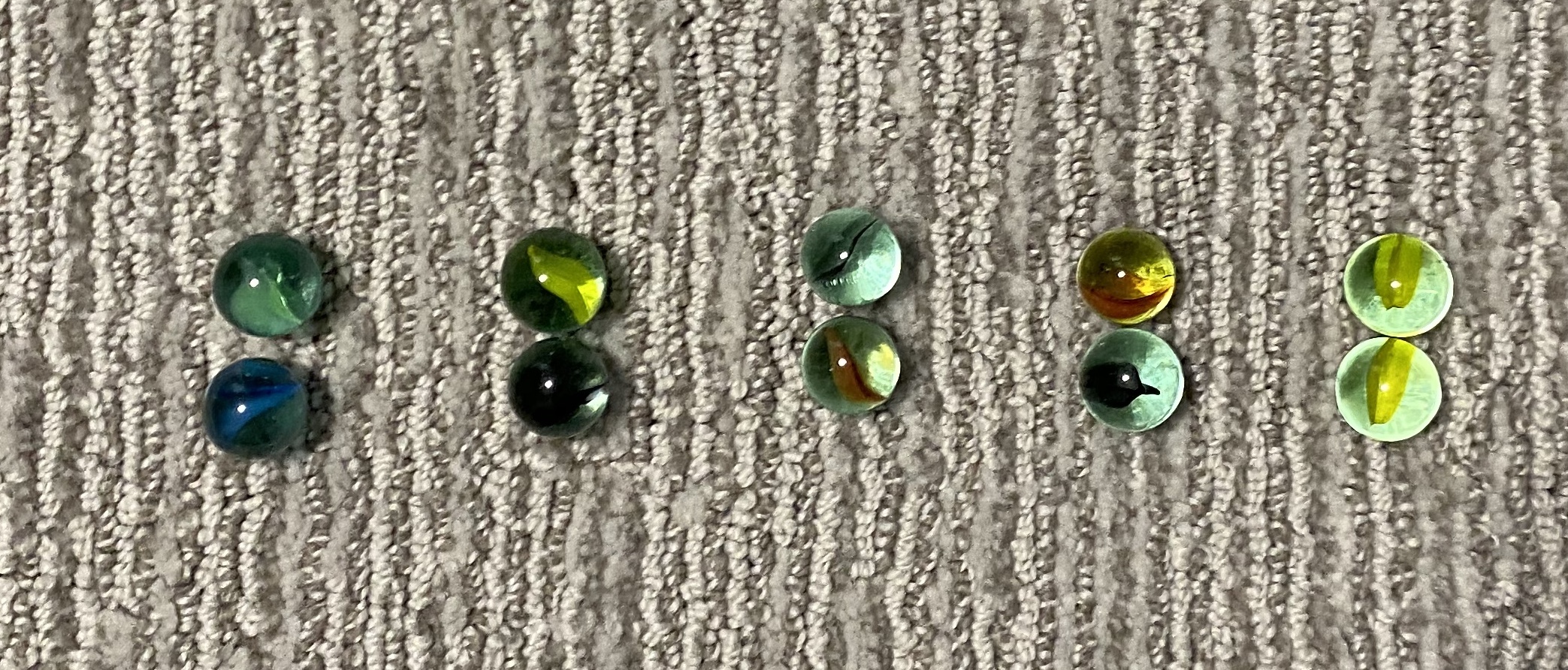
- Abacus and Number Lines. Take your counting to another level by using an abacus. If you don’t have an abacus in your house, make one! Use pipe-cleaners, straws or string, stretch them between 2 support pieces (wood, a shoe box, etc.), and use beads, or even pieces of paper with a hole punched through to string on each of those lines. It’s simply a tool for counting, and if you make one, well that can count (pun intended) as your “arts and crafts” project of the day! When I search “DIY Abacus” on Pinterest, these are the ideas that appear. They’re great! As far as a number line goes, all you need to do is draw a horizontal line, and list numbers in order from left to right over a certain interval (for young children stick with counting by 1’s). Number lines are certainly used by all math students across all grade levels in a variety of ways.
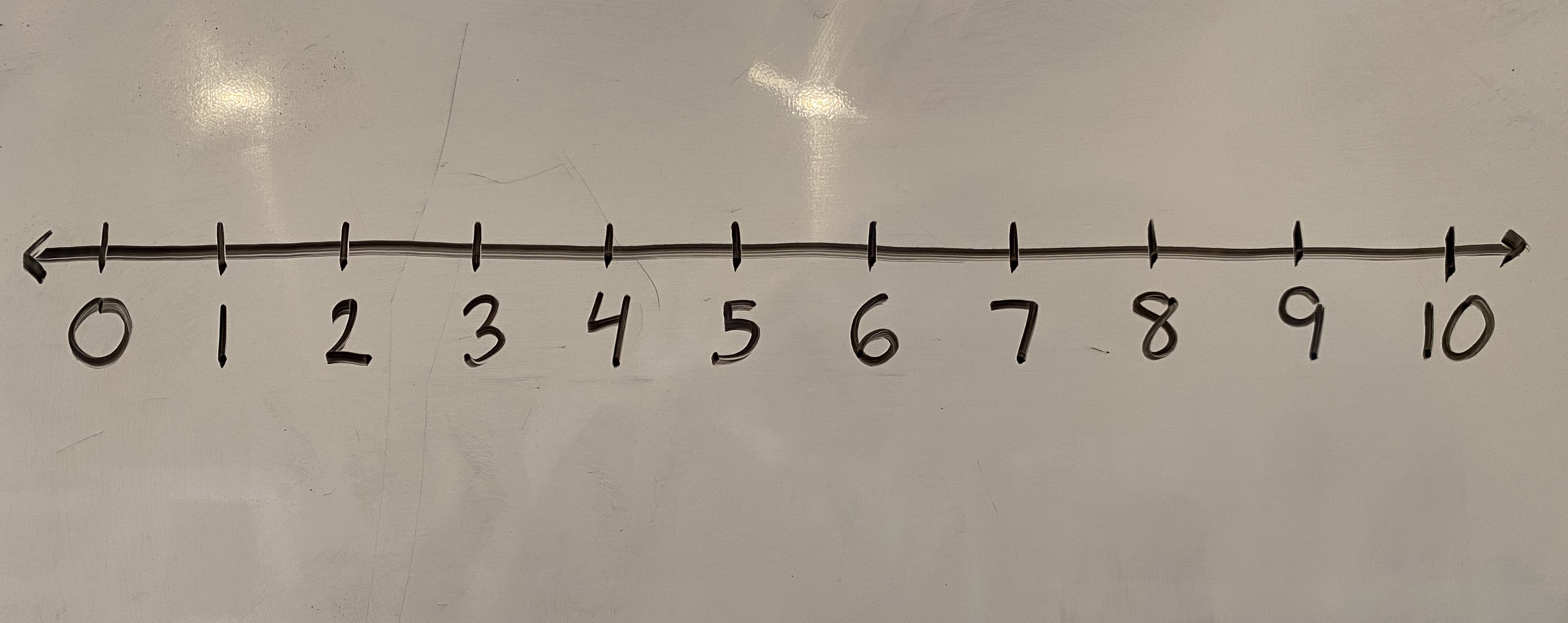
- Subitizing. Subitizing is something everyone does without realizing it’s called subitizing. Read this blog post for a nice overview. Subitizing is the ability to recognize the number of a small group of objects without counting. Subitizing helps to develop pattern recognition. It is also a key component in kids learning how to group in elementary school. A great example of subitizing is rolling a die. Whichever side the die lands on, if you can quickly recognize what number that side represents without counting the dots, that’s subitizing. Playing traditional “Double Six Dominoes” is a fun way to emphasize subtilizing, and this game is perfectly suitable for a very young child. When playing the game, have your child announce the number that he/she is working with, in order to reinforce the association between the visual and numeric value. (Also, this set on Amazon is only $6!)


- Arithmetic. You can put a simple arithmetic-spin on everyday household chores or activities. For example, this morning we made 6 hard-boiled eggs for breakfast. My son helped me peel the eggs. When we peeled 1 egg, I said: “We started with 6 eggs, and we already peeled 1 egg, how many eggs do we have left to peel?” He quickly knew the answer was “5.” Now, I could have kept subtracting 1 each time we peeled an egg, but instead, after the next egg, I said: “We started with 6 eggs, and we already peeled 2 eggs, how many eggs do we have left to peel?” and so forth. Rather than continuing to subtract by 1’s, I wanted to emphasize subtracting different amounts from 6. This is a good example of how parents are probably already doing this at home, but a simple twist in the questioning can elicit deeper learning.

- Algebra and Equations. I will put Merriam-Webster’s official definition for algebra here: “a generalization of arithmetic in which letters representing numbers are combined according to the rules of arithmetic.” What if we didn’t use letters, and we just used everyday language like “how many?” So, try doing arithmetic, but have your child fill-in a number instead. Let’s use the egg example. This is how I would have asked a question if I wanted my son to do algebra, rather than arithmetic: “If we started with 6 eggs, how many eggs do we have to peel so that we have 4 left?” Guess what…that’s algebra! The “how many eggs” can be replaced by “x” and you have the equation 6 – x = 4. Building on algebraic concepts, young children can definitely work with equations. For example: “I have 3 blocks in this first tower, and I have 2 blocks in this second tower. How many blocks should I add to my second tower so that each tower has the same number of blocks? The visual of the physical towers helps children clearly see that 1 block is the answer. A very young child doesn’t need to know that this is a word problem that translates to: 2 + x = 3, but that is what you are basically doing. This type of concept can be used in a variety of activities with just about anything in your home. Using that type of language is helpful when students learn how to translate word problems into symbols. Word problems are consistently one of the hardest concepts to grasp in school, but introducing this type of language early on may help alleviate some of those struggles in the later years.
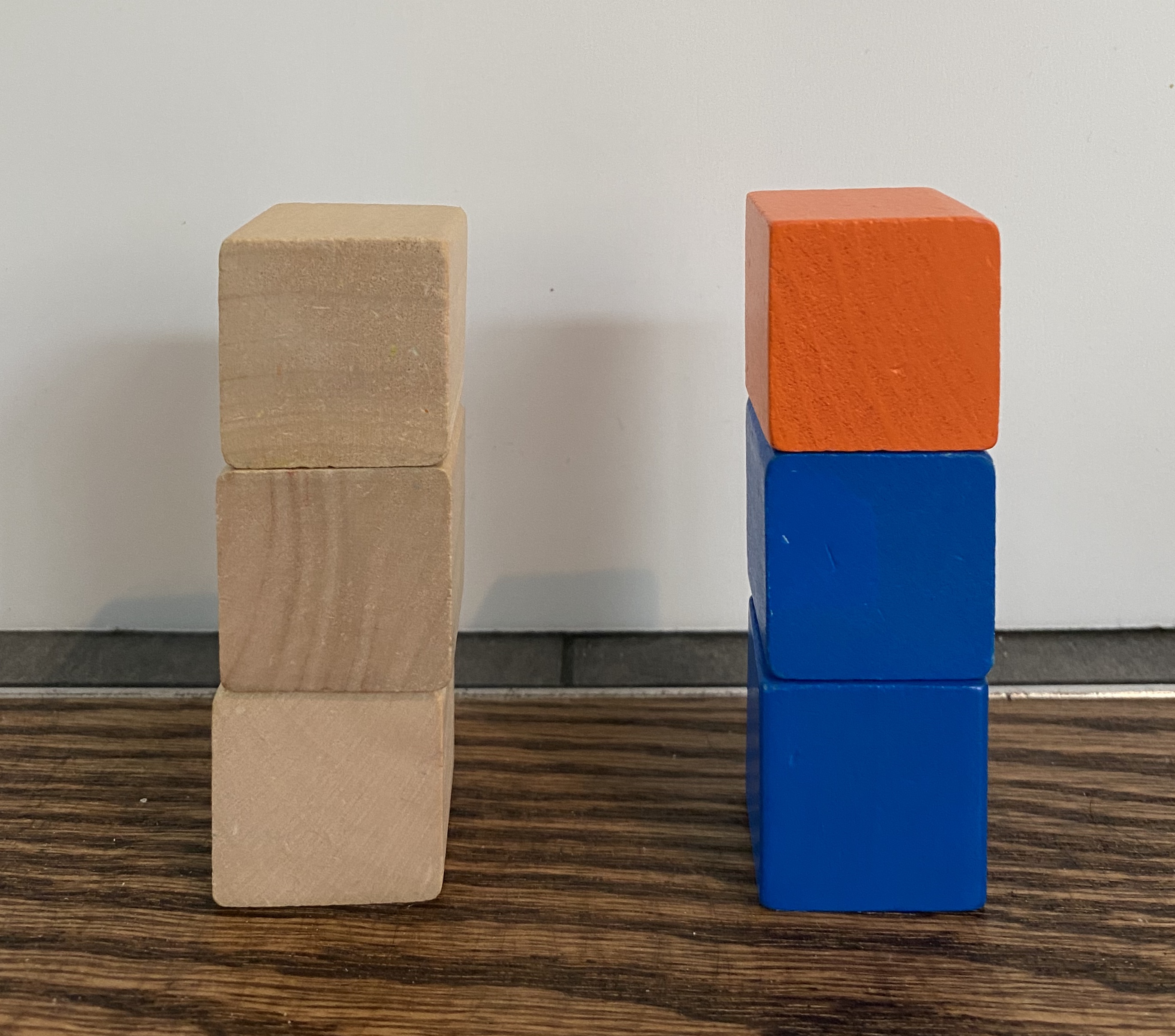
- Measuring. You can tackle measuring in different ways. The other day, my son and I spent close to an hour on this one activity: We measured various items around our home with a tape measurer. We created a table together with 2 columns: “item” and “length.” We then picked four of the items we measured, and created a bar graph to show how long each item was in inches. I made the graph template, and he colored in the bars. He didn’t create the scale for the length, but he counted the numbers as I wrote them! He was then able to answer different questions I asked him by interpreting the graph, such as “which item was the longest?” “Which item was the shortest?” “How long was ____?” and so on. All in this hour, my son practiced the following mathematical skills: counting, measuring, using tools appropriately, transferring information to a table, translating a table into a graph, interpreting a graph, critical thinking. This is just one example of a measuring activity that can be adapted in countless ways! Other ways to measure: don’t use traditional units (i.e. instead of inches, how many sneakers-long is this, or how many crayons-long is that?) or weigh items using a scale. Furthermore, using tools appropriately is a key skill needed and developed year after year in school.

- Units and Conversions through Cooking. It seems that everyone is cooking more than usual nowadays, and there are endless concepts to learn from cooking. From a math perspective, focus on the numbers in a recipe. Temperatures, quantities and time intervals are all elementary concepts that children can learn and that we can reinforce through cooking. Fractions are apparent in many recipes. “If we need 1/2 cup of milk and 1/3 cup of milk, divided, then how much milk will we need to set out for our recipe?” The answer is 5/6 of a cup of milk, but students in later years of elementary school should be able to find a common denominator and add those fractions. For older kids, work on scaling a recipe. For example, “This recipe serves 8 people, but obviously we’re not hosting anyone, so we need to scale this back to serve 4 people. What should we do with all of our ingredients? Why?” Or, furthermore: “This recipe serves 6 people, but there are 4 people in our house and we want to have enough food for 3 nights. How much should we make?” By the way, you can always add in a “why?” or “how do you know?” to get your child thinking out loud more! Cooking is also an amazing opportunity to practice basic conversions, such as cups, ounces, quarts, etc.
- Patterns. Patterns are everywhere! Take colored blocks and create a pattern. Have your child tell you what should come next in the pattern. You can do this with coloring also, and your child can practice his/her penmanship. Aside from colors, your child can create patterns with just about anything! Playing cards, different sized objects, different types of books – the possibilities are endless. Creating patterns offers a nice opportunity to practice sorting. Have your kids sort items into piles, and use the piles to more easily and efficiently create the patterns. Patterning is a wonderful skill and a fun way to engage in problem solving and creativity. As kids move through their math careers in school, they learn a lot about functions and sequences. A major component of functions, particularly linear functions at the end of middle school/beginning of high school is recognizing patterns in tables. This concept evolves to arithmetic and geometric sequences in the later years of high school where students work with both explicit and recursive formulas to find specific terms in a sequence.

- Shapes. Keep emphasizing different shapes whenever and wherever you can find them! Don’t be afraid to teach young children the proper names for shapes and solid figures (a.k.a. 3-dimensional shapes). Children should know “diamond” but you can also teach “rhombus.” For solid figures, a typical box is a rectangular prism, a ball is a sphere etc. Click here for a basic overview of solid figures. A very experienced secondary math teacher and administrator once told me years ago that the more often young children play with blocks, the better they can understand volume and surface area of solid figures when studying geometry in high school. Geometry students need to understand 3-dimensional solid figures when represented on a 2-dimensional flat piece of paper, and being able to visualize the solid figure can help in synthesizing these more complex geometrical relationships. It’s something I see many students struggle with. While we’re on the subject of high school geometry, many teachers use “nets” to teach surface area. Geogebra is a wonderful interactive website, and here is one of their activities on nets. The best real-world example of a net would be to take a traditional box (rectangular prism!) and cut it so that it can lay perfectly flat. What you will find is 3 pairs of congruent (simply put, exactly the same size and shape) rectangles. A cool way to work with nets would be to work with magnetic tiles/blocks. Create a solid figure, like a cube or a pyramid, and then take it apart and lay out all the pieces you used. Some questions to ask: “What shapes did you use to make your pyramid?” “Are all the triangle sides that you used the same size and shape?” When your child answers yes, you can introduce a new vocabulary word you now know: congruent!
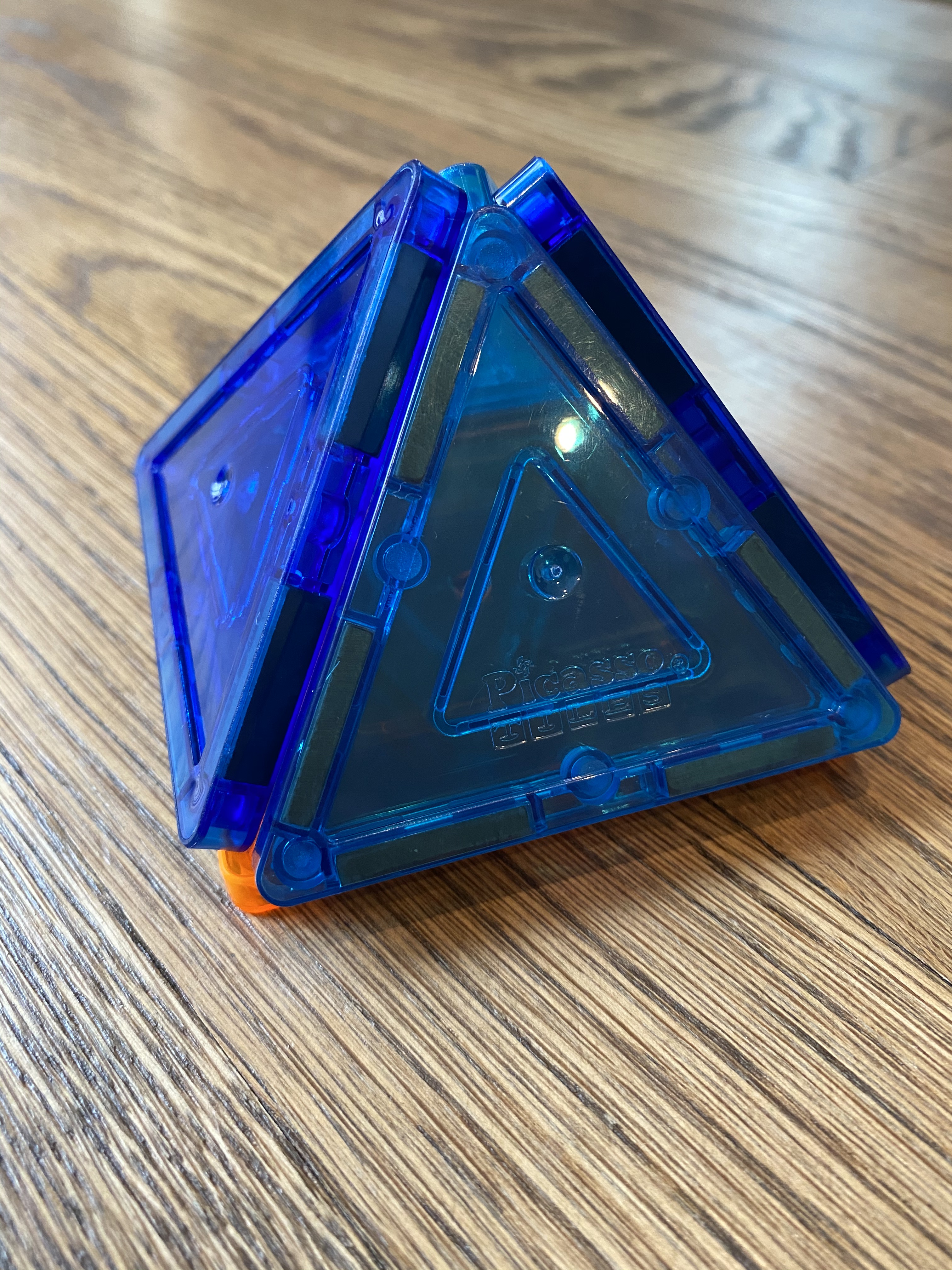

- Symmetry, WODB and Example/Non-Example. There are some other fun games and activities to play with things lying around your home, but that emphasize critical thinking and problem solving. Some examples are Symmetry, WODB and Example/Non-Example. Symmetry is a word young children can definitely learn. Introduce it in its most simple definition: “the same on each side.” Obviously, as children get older, this definition will become more sophisticated, but you can teach this concept at young ages, plus it’s a great vocabulary word. Look for items in your home that have symmetry. Maybe you have a dresser, and there are three drawers vertically stacked on each side. Maybe you have a four burner stove, and there are two burners laid out horizontally on each side. Have your children examine letters (or practice writing them!) and discover which letters have horizontal symmetry and which letters have vertical symmetry (i.e. “T” and “V” have vertical symmetry but not horizontal symmetry. “O” and “H” have both!). Not only did you explore symmetry, but you inadvertently taught your kids the concept of vertical and horizontal! I wrote a blog post on WODB that you can read here. “WODB” stands for “which one doesn’t belong.” Take 4 things, present them to your child, and ask: “Which one doesn’t belong? Why?” You can do this in countless ways, and it’s fun to find multiple answers for each problem set. For example: a rectangle, a square, a diamond (rhombus!) and a triangle. A triangle doesn’t belong because it has three sides, while the other shapes have four sides. Example/Non-Example is a simple game that can help build critical thinking skills. An example of a bird is a penguin. A non-example of a bird is a cow. An example of a three-digit number is 142. A non-example of a three-digit number is 23. With these games, it might not seem like you’re doing math, since you’re not calculating anything, but trust me, the critical thinking and problem solving needed to complete these games will definitely come in handy later on, both in and out of the classroom.


11. BONUS! Time, Money and Phone Numbers. These are three concepts and skills that are gradually becoming less prevalent as technology continues to evolve. Digital time replaces analog clocks. Credit cards and digital pay services replace physical money. Cell phones and contacts/favorites replace memorizing phone numbers. This generation may not naturally learn these skills well in their every day world, simply because they are not used as often. So, take the time now to teach them to your kids! Use play or real money to teach the names of different coins/bills, and how many coins/bills’ values equal a larger coin/bill’s value. Paper and coin money is also a great tool for arithmetic and algebra. If you don’t have a play or analog clock at home, draw a picture of one! When I search “analog clock craft” on Pinterest, these are the ideas that appear. If you still have a phone other than a cell phone in your home, use it to teach important phone numbers to you kids! Your own phone numbers, grandparents’ phone numbers, or even 9-1-1 are great first phone numbers to memorize! Click here for a simple way to teach phone numbers using paper plates.




So, there you have it. Just 10 (and a bonus!) examples of some simple ways to institute “M.A.T.H.” for your younger children while staying at home. The best piece of advice I can offer is to not stress out too much about what your kids are missing, but to try to focus on what your kids are gaining. They have the unique opportunity to learn from you, so go for it! Every day in my classroom, my students ask me the inevitable question: “When are we ever going to use this in real life?” It’s difficult for them to understand that they had been using these skills all along in their formative years. Hopefully years from now, when you are talking about this incredible time in our history with your children, you’ll have the stories to tell them all about how they did “M.A.T.H.” And better yet, that it was fun!
If you have other ideas to add, please share and comment below! It would be wonderful to build an on-going list of “M.A.T.H.” for all parents.
Stay healthy and safe!
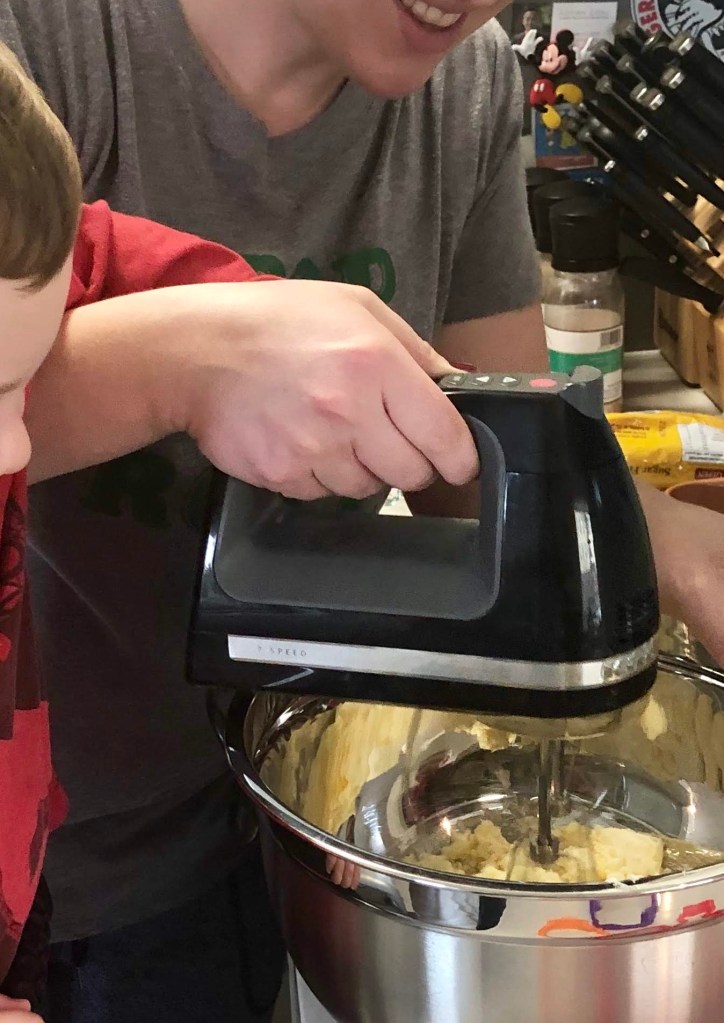

This is so true. This is also So helpful and such an important concept not just for our current time but all the time. As parents we often tackle to the literacy world through reading books to our children to foster a love of learning. But teaching math is just as important. Thanks for sharing. And I love the pictures and examples.
LikeLike
Thank you so much! I try to do as much literacy as I can. Reading and understanding word problems is getting more difficult every year for my students. I keep telling them they just need to read for pleasure, then they will be better readers overall!
LikeLike
Bravo!! From a fellow math teacher and mom to a little one, I have to say, this comprehensive list is everything a parent needs and more to do incredible M.A.T.H with your children!
LikeLike
Thanks! So glad others in the same boat (and field!) agree!
LikeLike
Great ideas Nora! As a former HS Math teacher, these ideas can also work with helping Special needs children (and older) to help them with their Math learning.
LikeLike
Thank you! Yes, absolutely! All ideas and activities can be readapted and reimagined in countless ways for all learners.
LikeLike
What a fantastic list of math ideas for little ones! The best part is that most every one of these ideas can be tweaked for an older child as well. Thanks for compiling this list in such a fun and concise way! Kudos Nora!
LikeLike
Thanks so much! Completely agree…these ideas are just simple ideas that can be reimagined and repurposed in countless ways!
LikeLike
Hi Nora! Thank you for all of the great ideas and beautiful photo support. I have been working of a post myself, but between the teaching from home and parenting during work hours and never ending computer work… I am happy to share your very well done piece instead. WHEW! 🙂
LikeLike
So glad you found it helpful! Parents really have a full load right now – I’m feeling it too! Hang in there!
LikeLike
You have done a great job here. There is just one concern I have. The age of young children makes a difference in how each of these areas is approached. For instance. in measurement children in preschool through grade one are measuring with non standard units not measuring tapes. There is so much young children can do with non standard units to build and understanding of how measurement works before using standard measures. So within each category I would separate out a bit for 4-6 year olds and then how to move on, This would avoid parents telling children rather than allowing them to explore and discover.
LikeLike
Thanks, Paula! Really appreciate your feedback, and agree with non standard units for young children! I mention: “Other ways to measure: don’t use traditional units (i.e. instead of inches, how many sneakers-long is this, or how many crayons-long is that?) or weigh items using a scale.” Ages and other variables will definitely affect how this material is presented for different kids. Hopefully parents will see this as a fluid guide they can change and adapt as needed! Thank you so much! Stay well!
LikeLike